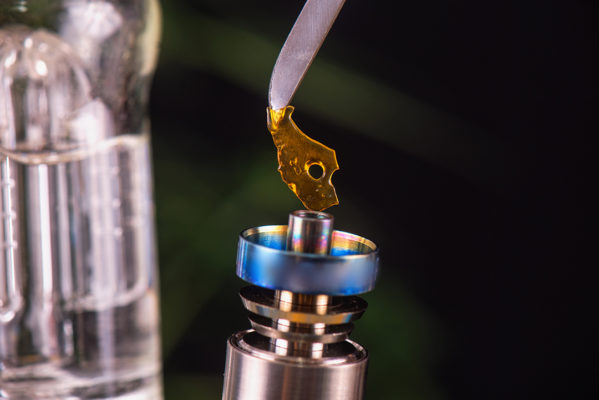What exactly is shatter? Maybe you’ve seen shatter at one of our locations and have always been curious. This blog post will answer some of the more common questions about this concentrate type.
Concentrates – like live resin, shatter and badder – are extremely potent and just a small dose can go a long way. Read on to learn more about this extract and why consumers choose this delivery method. We’ve tapped one of our favorite cannabis resources – Weedmaps to help us.
How Shatter Looks
Shatter looks how it sounds – hard and sharp. It’s a brittle, glasslike extract that can break when handled. In fact, according to Weedmaps, it’s named for its breakability and is favored for dabbing. Be careful with handling shatter on one of our cold Maine winter days, as mishandling can cause it to crack and scatter in every direction.
Though the appearance of shatter is mostly translucent, its coloring ranges from bright amber to a darker yellow shade. Shatter can range in consistency – from extremely brittle to a more taffy like snap-and-pull quality. Looking at each type and consistency can give insight into an individual product’s cannabinoid profile. Weedmaps describes shatter that is higher in THC will tend to be sappier than a product with a higher level of tetrahydrocannabinolic acid (THCA), which will be more brittle.
The Process
First off, it’s important to stress – like we have said in our other blog post about badder – don’t try to produce concentrates at home! The extraction process needs to be left to licensed professionals. Producing cannabis concentrates can be a hazardous process and should be left to those who are experienced. Solvents used are flammable and therefore can be explosive.
The process for producing shatter is the same as other extracts. However, the biggest difference is the post-extraction process. Weedmaps describes this process that involves six steps here.
How To Consume Shatter
All shatter can be dabbed but remember, not all dabs are considered to be shatter. Live resin and badder can both be dabbed, too, and the process is the same. You’ll want to use a small water pipe or “rig” with a flat bowl and a “nail.” The nail is designed to tolerate high temperatures. To dab, preheat the nail with a small butane or propane torch until it reaches 350-400 degrees Fahrenheit. This will help you to get the tastiest flavor of terpenes.
Using the flat end of the dabber, break a small piece (to start: pen point size) of the shatter onto the nail. Once this happens, the concentrate will instantly vaporize. Place a cap over the nail to capture the vapor and inhale through an opening on the opposite end of the rig. Make sure your dab and nail are clean so you can get the best flavorful experience!
You can also vape shatter, by adding your shatter to your vape’s heating chamber. As your shatter heats, it will quickly melt and turn to vapor which then can be inhaled.
Remember, as in all consumption of cannabis, start low and go slow. As stated above, consuming concentrates can be very potent and we recommend taking one hit and waiting at least 15 minutes before taking another. This will give you some time to experience the effect and see how you feel about the strain.
The potency is a benefit of consuming concentrates like shatter. The desired effect takes less cannabis as say, smoking flower, and it is easier on the lungs.
Shatter – A brief background
Did you know shatter’s roots are in hashish production? Weedmaps breaks down shatter’s history – letting us know that the first shatter was produced in the late 1990s.
But it was in 1989, when author D. Gold published a second edition of his original 1973 book, “Cannabis Alchemy: The Art of Modern Hashmaking,” that included the first full explanation of how to make hash. A year later, in 1990, medical technologist Michael Starks also published a second edition of his 1977 book, “Marijuana Chemistry: Genetics Processing and Potency,” with a detailed explanation of the hash production process.
As we talked about in our badder blog post, it was in the 1990s when Budderking, a Canadian cannabis manufacturer first marketed budder and shadder. As Weedmaps reports, its products hit the shelves of dispensaries in 2003. In 2005, techniques for producing these products were published in Cannabis Culture magazine. By the 2010s, concentrates emerged as a staple in cannabis consumption with dab rigs rising in popularity among bongs. Then the sentiment emerged, “If it doesn’t shatter, it’ doesn’t matter.”
Make sure you check out our tasty and terpy HighNorth Shatter
Created from freshly frozen strains. It’s brittle consistency makes dabbing easy and provides strong hits every time. Enjoy!




